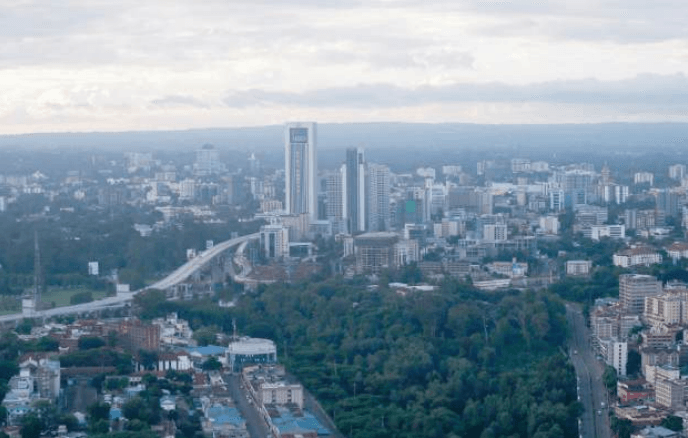Agrifood systems are facing an escalating threat from climate change-induced loss and damage, a new report has shown.
The report by Food and Agriculture Organisation of the United Nations said small-scale farmers in Kenya continue to bear the brunt of the effects of climate change.
The country is coming from a severe drought period with five consecutive failed rains and is now experiencing El Nino which has caused flooding.
The consecutive failed rains have resulted in low yields forcing famers to shift to drought resistant crops like millet and sorghum.
Catherine Nguli is among farmers in Makueini, Kitui and Taita Taveta counties, who have shifted from maize farming and is now growing green grams, sorghum, groundnuts and millet.
She said she had to shift to take care of her children aged, 25 and 23.
“I thought it is better to have some little money than none, so I decided to grow drought tolerant crops and I have no regrets,” Nguli said.
She said she does not just grow the crops, but also adds value to make more money.
Nguli said she makes birthday and wedding cakes from sorghum and pearl millet flour. She sells the cakes at Sh1,200 and Sh1,500 per kg .
The mother of two said the drought tolerant crops have assured food security because maize does not do well in Makueni.
Nguli said maize needs a lot of rain unlike green grams, millet and sorghum, which do well with little rainfall.
The report released by FAO on the sidelines of the UN Climate Conference COP28 in Dubai, United Arab Emirates showed the need to increase financing to help address farmers’ vulnerabilities.
It came one day after world leaders at COP28 reached a breakthrough deal to operationalise the Loss and Damage Fund,
The establishment of the fund was agreed on last year at COP27.
Several countries have already pledged some Sh46 billion ($300 million) to the fund.
The FAO report said about 35 per cent of current climate action plans explicitly refer to loss and damage.
It identified agriculture as the single most impacted area.
“Despite its central role in global agrifood systems including production, distribution and consumption, agriculture has not been a primary focus in discussions surrounding loss and damage,” the report said.
“However, communities relying on agrifood systems for their livelihoods currently face acute challenges, including poverty, food insecurity and limited access to services."
It underscored critical need for targeted efforts to address vulnerabilities in agrifood systems, recognising their pivotal role in livelihoods and sustainable development.
In 2020, the agrifood sector employed more than 866 million people globally and represented a turnover of $3.6 trillion (Sh552 trillion).
FAO director general QU Dongyu said COP28 said the loss and damage fund will help vulnerable countries deal with the impacts of climate breakdown.
“I extend my sincere congratulations to all countries for their important commitments to operationalise the fund. These pledges are not just financial; they represent a shared acknowledgment that addressing challenges of climate change is an urgent moral imperative,” he said.
Developing nations, grappling with repercussions of extreme weather events such as droughts, floods and rising seas, had advocated for the establishment of the fund.
The report said losses and damages in agrifood systems represent a substantial economic burden.
FAO data from post disaster assessments conducted between 2007 and 2022 indicate that agricultural losses accounted for an average of 23 per cent of the total impact of disasters across all sectors.
Droughts alone caused over 65 per cent of losses in the agriculture sector during this period, translating to an estimated loss of $3.8 trillion (Sh582 trillion) worth of crops and livestock in the last 30 years.
The report said climate events are anticipated to cause further loss and damage, impacting productivity, efficiency and the livelihoods of those dependent on agrifood systems.
It also identified a pressing need to enhance the methodologies and tools for assessing negative impacts of climate change, with existing methods often failing to capture slow-onset events and non-economic dimensions of loss and damage.
“The lack of an internationally agreed definition on loss and damage further complicates efforts to address the challenge,” the report said.
According to the report, current levels of tracked climate finance fall below the potential needs for agrifood systems.
It indicated that specific data on financial needs for loss and damage is lacking.
The FAO report called for clarification of the meaning of loss and damage for national agrifood systems, enhancing climate risk assessment and investing in data collection and research.
This is in addition to implementing adaptation measures, strengthening emergency response, and adopting a recovery approach based on ‘’building back better”.
“As climate change continues to surpass adaptation limits, the spotlight on agriculture as a vulnerable sector becomes increasingly crucial for global efforts to build resilient and sustainable food systems,” the report said.











